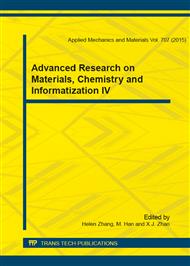p.360
p.364
p.368
p.372
p.377
p.381
p.386
p.390
p.397
A New Scheme Based on Climbing Method for Maximum Photovoltaic Power Tracking Control
Abstract:
The maximum power point tracking (MPPT) of photovoltaic arrays can increase the output power of the photovoltaic systerm, improve the utilization of solar energy. This paper describes the output characteristics of the photovoltaic arrays and the principle of maximum power point tracking,then,based on Incremental conductance method, proposes a sub-type of the variable step size MPPT algorithm. simulated using MATLAB/Simulink, the final results show that the proposed algorithm is able to quickly track the maximum power point and power concussion problem has been significantly improved.
Info:
Periodical:
Pages:
377-380
Citation:
Online since:
December 2014
Authors:
Keywords:
Price:
Сopyright:
© 2015 Trans Tech Publications Ltd. All Rights Reserved
Share:
Citation:


